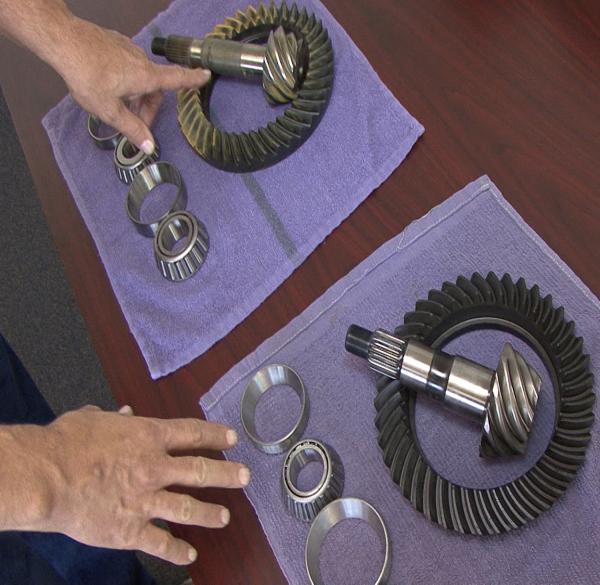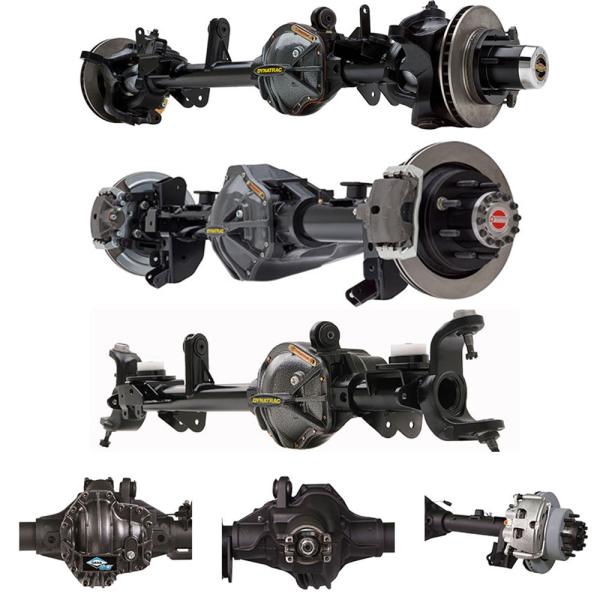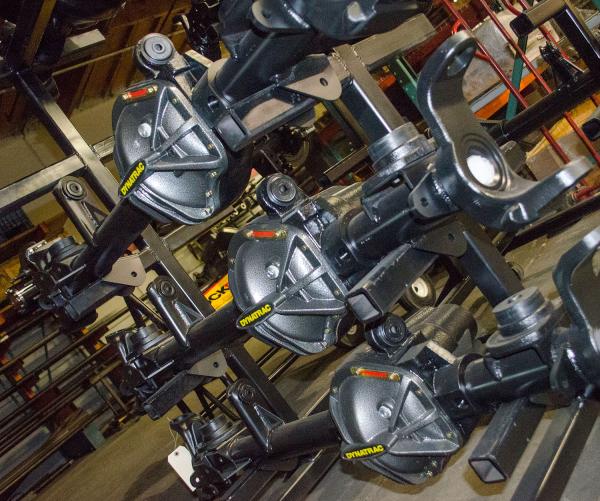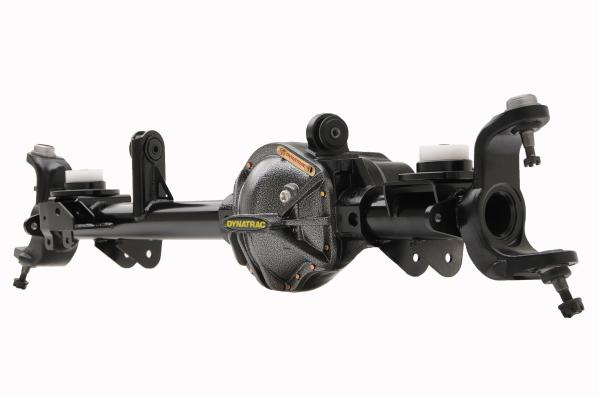Axles
-
The Difference Between New Generation Dana 44 Axles and Older Ones
The Dana 44 has been a desirable axle for Jeep builds nearly since its introduction in the 1940s. But before you get too excited about scoring a Postal Jeep 44 or even spend much energy drooling over the next-gen or new generation Dana 44 used under the 2007-2016 Jeep Wrangler JK, you owe it to yourself to learn the facts. Not all 44s are equal. The Dana 44 has been manufactured for nearly 70 years, and was original equipment under Jeep, Ford, GM, Dodge, International Harvester and Studebaker vehicles, and even the Isuzu Rodeo and Honda Passport. And almost every one of these had some unique, funky specification just for that model. The Dana 44 has been offered in both high- and low-pinion, with centered and offset pumpkins. Factory axleshafts ranged from 10-spline through 32 with diameters from 1.175-inch up to 1.41-inch. Continue reading → -
Comparing Axle Upgrade Options for Your Jeep Wrangler JK, Rubicon, TJ, YJ and XJ Cherokee
Instead of forcing our customers into a single axle option for their Jeep JK Wrangler, Wrangler Unlimited, Rubicon, TJ, YJ and XJ Cherokee, Dynatrac offers many different levels of complete bolt-in off-road axle assemblies to meet a broad variety of ways that people use their vehicles. From the Mopar JK Rubicon Dana 44 to the ProRock 80,™ we can meet just about every need, can help you choose the option that best fits your needs, including your budget. Continue reading → -
Full-Floating Versus Semi-Floating Axle
Any drive axle must be capable of performing two functions: Support the weight of the vehicle safely and transmit power to the wheels for propulsion. By design, all steering (front) drive axles are full-floating, but rear drive axles may be semi-floating or full-floating. Continue reading → -
10 Questions You Should Ask When Shopping for an Off-Road Axle
If you're shopping for an off-road axle for your Jeep, there are a lot of choices. They all promise to be a bolt-in and an upgrade to the factory axles, but don't be fooled: there are some key differences! If you're looking for a Dana 44 upgrade or the strength and durability of a Dana 60-based axle, here are some important questions you need to ask companies that you're considering Continue reading → -
What Makes a Dynatrac ProRock™ Axle Different and Better for Your 4x4
You’re probably familiar with Dynatrac and its axles, but did you know that the company was the first to introduce a high-clearance differential housing for off-roading? In 2002 the ProRock 60® debuted and changed the off-road axle industry forever. The patented design of the ProRock 60 provides more ground clearance than a much weaker and less capable Dana 44 axle, and a full inch more clearance than a Dynatrac Pro 60™ or traditional Dana 60. This feature alone allows your 4x4 to keep moving forward up the trail, instead of hung up and stuck. Continue reading → -
Reverse Cut Versus Standard Cut Ring Gears
Perhaps the single most misunderstood axle term is reverse cut, often mistakenly referred to as reverse rotation. A reverse cut housing is not a standard cut housing turned upside down, it is a specially designed housing. The term "reverse cut" refers to the direction of the spiral cut in the ring gear, which is opposite that of a standard cut ring gear: Contrary to popular belief, it does not run backwards or in reverse. The principle behind a reverse cut is to strengthen the operation of the gear when it is used for a front driving axle application. Continue reading →
Page
- Page Previous
- Page 1
- You're currently reading page 2




